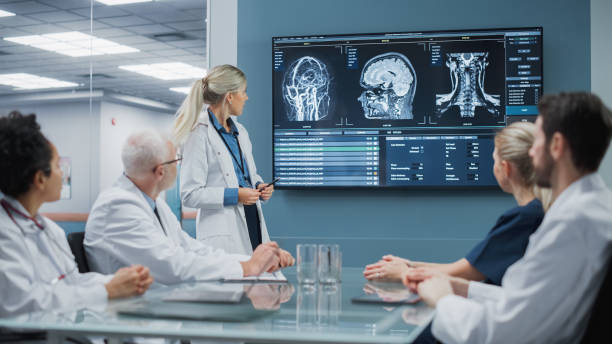Importance Of Radiology In Healthcare

Importance Of Radiology In Healthcare
Today, radiology is a key diagnostic tool for several diseases, helps with monitoring treatment, and can even help with predicting specific outcomes. A wide range of variable techniques are available for the detection, staging, and treatment. Diagnostic imaging provides detailed information about structural or disease-related changes. It is used to diagnose or treat patients by recording images of the internal structure of the body to assess the presence or absence of disease, foreign objects, and structural damage or anomalies.
Crucial value of radiology in healthcare:
1. Responsible for interpreting diagnostic images, providing physicians with indispensable information for disease detection.
2. The value of screening leads to prevention, early detection, staging and treatment of many serious diseases.
3. Treatment Monitoring with Imaging and diagnostic methods.
4. Diagnostic imaging allows for detailed information about structural or disease-related changes.
5. Along with the X-ray, radiology has grown to include other imaging technologies, such as Ultrasound, CT, MRI, Fluoroscopy, and Angiography. These different technologies allow for real-time imaging of body systems, providing 2D and 3D maps of the tissues and providing cross-sectional views
The future role of radiology in healthcare:
- There are many examples of the effect of rapid developments but the increase in the temporal and spatial resolution of acquisition in CT and the complexities of new software packages in MR have been paramount. The former has involved radiologists in many non-invasive vascular imaging interpretations that were previously the domain of the sub-specialist. The latter has resulted in functional imaging, spectroscopy and diffusion imaging requiring specialist knowledge of conditions which previously have been the responsibility of the clinical radiologist such as the early evaluation of stroke patients.
- Artificial Intelligence (AI) has the potential to revolutionize the field of radiology and teleradiology. Artificial intelligence technologies like machine learning and deep learning have significant potential to further enhance teleradiology. AI can help automate parts of the radiology workflow, reduce workload volumes, and provide real-time intelligence to support radiologists.
- On October 4, 2023 — Rology, as a leading AI-assisted teleradiology platform in the Middle East and Africa, announced that it has received 510(k) clearance (K231385) from the U.S. Food and Drug Administration (FDA) for its Teleradiology Platform as a Class II Medical image management and processing system.
- Teleradiology is becoming a significant component in the delivery of radiological services due to the high quality and speed of image transmission. Communication of images between radiologists, via local or distant networks is now a widely available option to solicit a specialized opinion in selected cases. This enables subspecialty opinions to be provided easily and quickly, thus undermining the role of the radiologist who does not possess a specialized knowledge. The patients and their clinicians are now rightly expecting an expert opinion and it is possible now to obtain one through teleradiology services.

